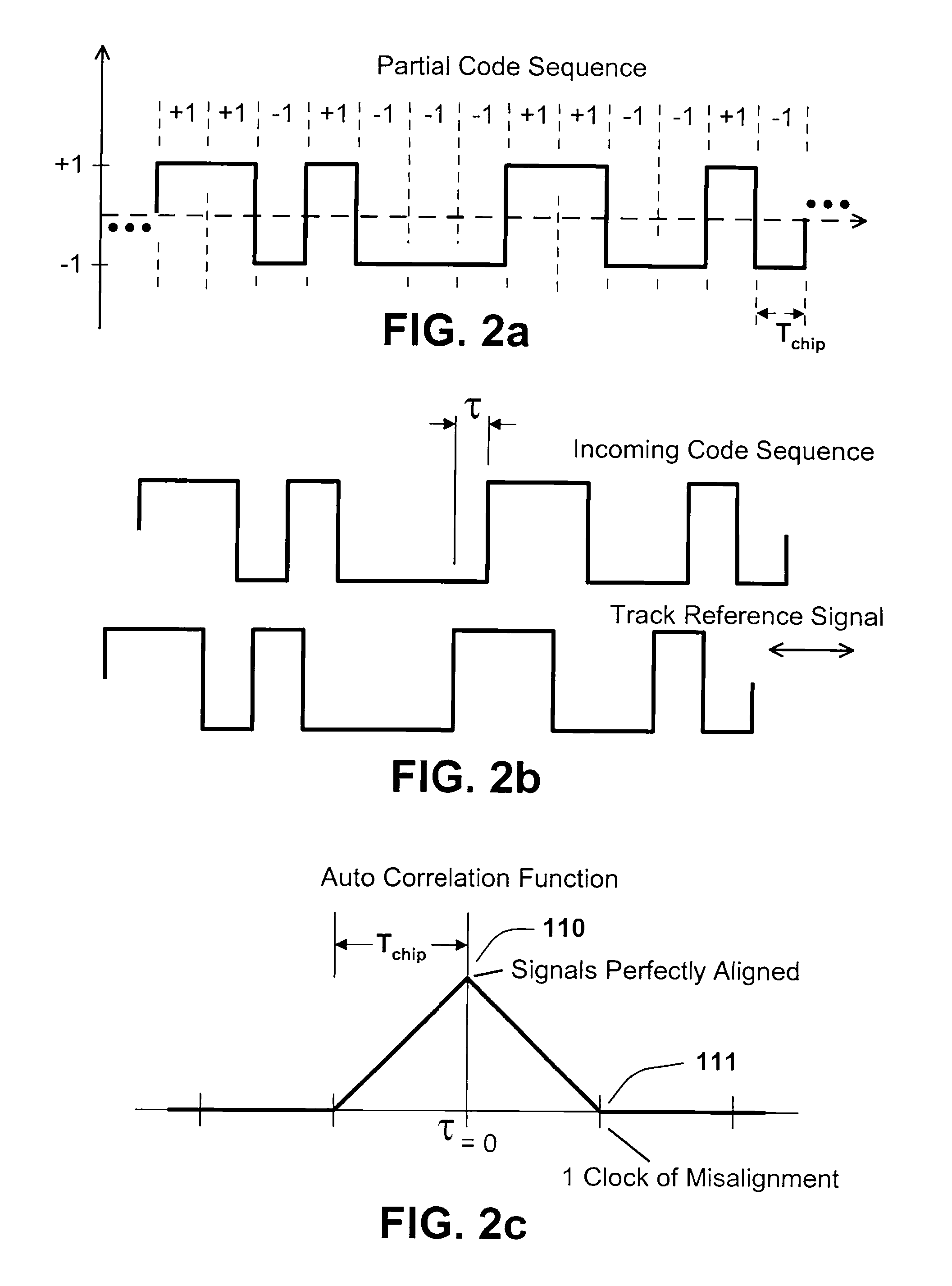Unbiased code phase discriminator
a phase discriminator and code technology, applied in the field of communication, timing or positioning devices, can solve the problems of large 0.4 m range error, and achieve the effect of eliminating or substantially reducing errors caused by multipaths and eliminating phase biases
- Summary
- Abstract
- Description
- Claims
- Application Information
AI Technical Summary
Benefits of technology
Problems solved by technology
Method used
Image
Examples
Embodiment Construction
1. Introduction
[0051]As required, detailed embodiments and / or aspects of the present invention are disclosed herein; however, it is to be understood that the disclosed embodiments / aspects are merely exemplary of the invention, which may be embodied in various forms. Therefore, specific structural and functional details disclosed herein are not to be interpreted as limiting, but merely as a basis for the claims and as a representative basis for teaching one skilled in the art to variously employ the present invention in virtually any appropriately detailed structure.
[0052]FIG. 1 illustrates the three primary components of a code tracking loop: the phase discriminator 120, the loop filter 121 and the Numerically Controlled Oscillator (NCO) 122. The phase discriminator 120 generates an output error signal 123 proportional to the phase difference between the incoming (measured) signal to be tracked 124 and the current phase estimate 125. The error signal 123 is filtered by the loop filt...
PUM
 Login to View More
Login to View More Abstract
Description
Claims
Application Information
 Login to View More
Login to View More - R&D Engineer
- R&D Manager
- IP Professional
- Industry Leading Data Capabilities
- Powerful AI technology
- Patent DNA Extraction
Browse by: Latest US Patents, China's latest patents, Technical Efficacy Thesaurus, Application Domain, Technology Topic, Popular Technical Reports.
© 2024 PatSnap. All rights reserved.Legal|Privacy policy|Modern Slavery Act Transparency Statement|Sitemap|About US| Contact US: help@patsnap.com










